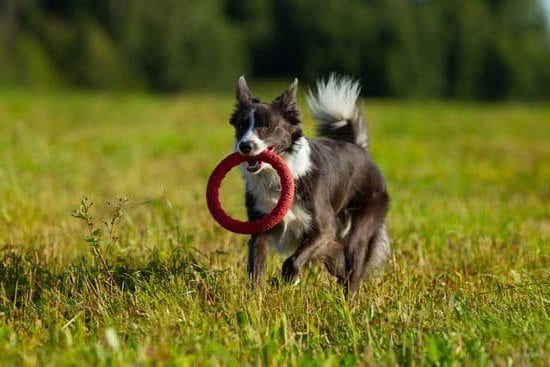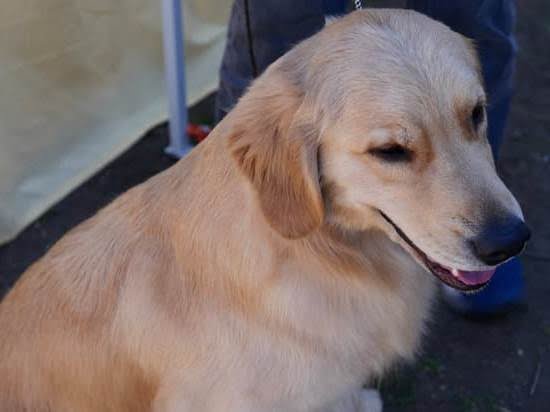Are you wondering how to train a dog to use puppy pad? Training your dog to use puppy pads can be a convenient solution for pet owners who are unable to take their dogs outside frequently.
Puppy pads are absorbent, disposable pads that are designed to provide a designated spot for dogs to urinate and defecate indoors. In this article, we will explore the purpose of puppy pads and provide a comprehensive guide on how to train your dog to use them effectively.
Understanding the purpose of puppy pads is essential before beginning the training process. Puppy pads serve as a convenient and hygienic alternative to outdoor potty training, especially for puppies and senior dogs who may have difficulty holding their bladder or bowel movements for long periods. They can also be useful for pet owners who live in apartments or homes without easy access to outdoor spaces.
In this section, we will discuss the importance of choosing the right puppy pad materials and size, setting up the puppy pad area, positive reinforcement techniques, creating a consistent training routine, and addressing common challenges. By following our step-by-step guide, you can successfully train your dog to use puppy pads and build a strong bond with your furry companion. Let’s get started.
Choosing the Right Puppy Pad
When it comes to choosing the right puppy pad for your dog, there are a few factors to consider. First, you’ll want to think about the material of the pad. Puppy pads come in various materials such as disposable, washable, and synthetic grass. Each type has its own advantages and disadvantages, so it’s important to choose one that best suits your dog’s needs and your lifestyle.
The size of the puppy pad is also an important consideration. The pad should be large enough to accommodate your dog comfortably while still fitting within the designated area for potty training. It’s recommended to choose a size that gives your dog enough space to move around but also keeps accidents confined to the pad.
One key aspect of choosing the right puppy pad is considering how it aligns with your training strategy. For example, if you plan on eventually transitioning your dog to outdoor potty training, you may want to start with a specific type of puppy pad that makes that transition easier.
Here are some key things to keep in mind when choosing the right puppy pad:
- Material: Consider disposable, washable, or synthetic grass options
- Size: Choose a size that provides enough space for your dog without being too large for the designated area
- Training Strategy: Consider how the choice of puppy pad aligns with your overall training goals
With these considerations in mind, you can select a puppy pad that sets you up for successful potty training with your dog.
Setting Up the Puppy Pad Area
Choosing the Right Location
When setting up a designated area for your puppy pad, it’s important to choose a location that is easily accessible to your dog. This may mean placing the puppy pad in an area where your dog spends most of their time, such as a kitchen or bathroom. It’s also important to consider choosing a location that is easy to clean and won’t cause damage to any flooring.
Training Strategy
When introducing your dog to the puppy pad, it’s essential to have a clear training strategy in place. Start by bringing your dog to the puppy pad area regularly, especially after meals and naps.
Encourage them to use the pad by using positive reinforcement techniques, such as providing treats and praise when they successfully use the pad. It’s also crucial to monitor your dog closely and redirect them to the puppy pad area if you catch them attempting to go elsewhere.
Creating a Safe and Comfortable Environment
In addition to choosing the right location, it’s important to create a safe and comfortable environment around the puppy pad. Make sure there are no distractions or obstacles that could prevent your dog from using the pad. You can also consider using barriers or gates to help guide your dog towards the puppy pad area. By creating a supportive environment, you can help your dog feel more confident in using the puppy pad consistently.
By following these strategies for setting up the puppy pad area and implementing a clear training plan, you can effectively teach your dog how to use a puppy pad for potty training purposes. With patience, consistency, and positive reinforcement, you can help your furry friend develop good habits and set them up for success in their potty training journey.
Positive Reinforcement
Choosing the Right Treats
When it comes to using positive reinforcement for puppy pad training, choosing the right treats is essential. It’s important to select treats that your dog absolutely loves and finds irresistible. This could be small pieces of cooked chicken, cheese, or commercial dog treats. The key is to find something that will really motivate your dog to use the puppy pad and associate it with a positive experience.
Timing and Consistency
In order for positive reinforcement to be effective, timing and consistency are crucial. Whenever your dog uses the puppy pad, immediately praise them and offer a treat as a reward. This will help reinforce the behavior and create a positive association with using the puppy pad. Consistency is also important – make sure everyone in the household uses the same command and reward system so as not to confuse your dog.
Gradual Fading of Treats
Once your dog has gotten the hang of using the puppy pad consistently, you can start gradually reducing the frequency of treats. Instead of giving a treat every time they use the pad, start offering them intermittently. This will help maintain their motivation while also transitioning them towards using the pad without relying solely on treats. Remember to continue offering verbal praise and affection as part of their reward.
Consistency Is Key
When it comes to training your dog to use a puppy pad, consistency is the key to success. By establishing a clear routine, you can help your furry friend understand where they should go potty and when. Here are some helpful tips on how to create a consistent training schedule for your dog:
- Establish designated potty times: Dogs thrive on routine, so it’s important to take them to the puppy pad at regular intervals throughout the day. This includes first thing in the morning, after meals, before bedtime, and during playtime.
- Use verbal cues: To reinforce the idea of using the puppy pad, use a specific command or cue each time you take your dog to the designated area. For example, saying “go potty” or “do your business” can help your pet associate the action with the location.
- Monitor and supervise: Keep an eye on your dog’s behavior and body language so you can anticipate when they need to go potty. If you notice signs such as sniffing around or circling in a particular spot, gently lead them to the puppy pad.
In addition to creating a consistent routine for puppy pad training, it’s important to be patient and understanding with your furry companion. Remember that accidents may happen during the learning process, and it’s essential to remain calm and avoid scolding or punishing your dog. Over time, with positive reinforcement and a reliable schedule, your pet will learn how to use the puppy pad effectively.
By following these tips and maintaining a consistent training routine, you can set your dog up for success in using the puppy pad. With patience, praise, and regular practice, you can help your furry friend develop good potty habits that will benefit both of you in the long run.
Cleaning and Maintenance
Regular cleaning and maintenance of the puppy pad area is essential in ensuring a hygienic and comfortable environment for your pet. By maintaining a clean space, you can also minimize the risk of accidents or reluctance from your dog to use the pad. Here are some tips on how to keep the puppy pad area fresh and clean.
Firstly, it’s important to establish a regular cleaning routine. This means removing any solid waste from the pad as soon as possible. Additionally, changing the entire pad at least once a day or more frequently if necessary can help prevent odors and promote cleanliness. Using an enzymatic cleaner specifically designed for pet messes can further eliminate any lingering smells that may discourage your dog from using the pad.
When it comes to washing reusable puppy pads, be sure to follow the manufacturer’s instructions for proper care. Some pads may be machine washable while others require hand washing. Using a mild detergent that is safe for pets and avoiding fabric softeners or harsh chemicals is recommended to maintain the integrity of the pad material.
To encourage your dog to consistently use the puppy pad, consider using a attractant spray designed specifically for this purpose. These sprays contain pheromones that can entice your pet to use the designated area for elimination. However, it’s important to note that these sprays should not be used as a substitute for regular cleaning and maintenance of the puppy pad area.
By following these tips for cleaning and maintaining the puppy pad area, you can create a comfortable and hygienic space for your dog while also promoting successful potty training. Regular cleaning not only ensures that your pet will continue using the pads but also helps prevent any unpleasant odors in your home.
Troubleshooting
Training a dog to use a puppy pad can sometimes pose challenges and common issues that need to be addressed. One of the most common problems dog owners face is when their pets refuse to use the puppy pad altogether. In such cases, it’s important to evaluate whether the pad is located in an accessible area for the dog.
Placing the pad in a secluded or hard-to-reach spot may discourage your pet from using it. If this is the case, consider moving the pad to a more convenient location where your dog can easily find it.
Another issue that some owners encounter is when their dogs only partially use the puppy pads, leading to messes around the designated area. To address this problem, consider using multiple pads in different areas of the house until your dog gets used to using them consistently. Additionally, paying attention to your dog’s behavior and body language can help you anticipate when they need to go potty and prompt them to use the pad at the right times.
Moreover, some dogs may exhibit reluctance or fear towards walking on or using the puppy pad. This can be overcome by gradually introducing the pad to your dog and associating it with positive experiences through treats and praise as part of positive reinforcement. By creating a reassuring environment around the puppy pad, your dog will eventually learn that it’s a safe and acceptable place for them to relieve themselves.
| Common Issue | Solution |
|---|---|
| Dog refuses to use puppy pad | Re-evaluate location accessibility; Consider moving pad |
| Partial use of puppy pads | Use multiple pads in different areas;Observe body language for timely prompts |
| Dog reluctance/fear towards using puppy pads | Gradually introduce pads with positive reinforcement using treats and praise; Create reassuring environment around pads |
Gradual Transition to Outdoor Potty Training
Training a dog to use puppy pads is a convenient solution for pet owners who live in apartments or have limited outdoor access. However, it’s important to eventually transition your dog to outdoor potty training for long-term success. Follow these tips for a smooth and gradual transition away from puppy pads:
- Start by gradually moving the puppy pad closer to the door leading outside. This will help your dog associate the act of going potty with being outdoors.
- Once your dog consistently uses the pad near the door, start placing the pad right outside the door. This step helps your dog make a connection between going potty and being outside.
- When your dog is comfortable using the pad outside, remove it completely and encourage your dog to go potty directly on the grass or designated area in your yard. Make sure to offer plenty of praise and rewards when your dog successfully goes potty outdoors.
It’s crucial to remain patient during this transitional period as some dogs may take longer to adjust than others. Remember to use positive reinforcement, such as treats and verbal praise, to encourage and reward your dog for using the bathroom outside. With consistency and patience, you’ll successfully transition your furry friend from puppy pads to outdoor potty training.
Remember that accidents may happen during this transition period. If your dog has an accident inside, avoid scolding or punishing them. Instead, clean up any messes thoroughly and continue with the outdoor potty training routine. Stay consistent with your training methods and soon enough, you’ll have a fully house-trained pup.
Conclusion
In conclusion, training a dog to use a puppy pad can be a challenging but ultimately rewarding experience for both you and your furry friend. By understanding the purpose of puppy pads and choosing the right materials, as well as setting up the pad area effectively, you can create a successful training environment for your dog. Positive reinforcement with treats and praise, along with consistency in routine, are crucial elements in the training process.
As you work through the training stages and encounter challenges along the way, it’s important to remain patient and committed to the process. Remember that every dog is unique, and some may take longer to grasp the concept of using puppy pads than others. Troubleshooting common issues such as accidents outside of the designated area will require patience and consistency in your approach. With time and effort, most dogs can be successfully trained to use puppy pads.
Finally, as your dog becomes accustomed to using the puppy pad, consider gradually transitioning them to outdoor potty training. This can be a significant milestone in your dog’s development and a step toward greater independence.
Through this process, you’ll not only celebrate your success in training your dog but also build a strong bond based on trust and mutual understanding. With commitment and dedication, you can effectively train your dog to use a puppy pad while strengthening your relationship with them.
Frequently Asked Questions
How Do I Get My Dog to Use a Puppy Pad?
To get your dog to use a puppy pad, you can start by placing the pad in an easily accessible area. Whenever you notice your dog showing signs of needing to go, lead them to the pad and give them praise if they use it.
How Long Does It Take for a Puppy to Learn to Use a Puppy Pad?
The time it takes for a puppy to learn to use a puppy pad varies from dog to dog. Some puppies may learn in just a few days, while others may take weeks or even longer. Consistency, positive reinforcement, and patience are key in this training process.
How Do You Attract a Dog to a Puppy Pad?
To attract a dog to a puppy pad, you can try using treats or toys to create a positive association with the pad. Placing the pad in the same spot consistently and using pheromone sprays or attractants designed for this purpose can also help encourage your dog to use it.

Welcome to the blog! I am a professional dog trainer and have been working with dogs for many years. In this blog, I will be discussing various topics related to dog training, including tips, tricks, and advice. I hope you find this information helpful and informative. Thanks for reading!





